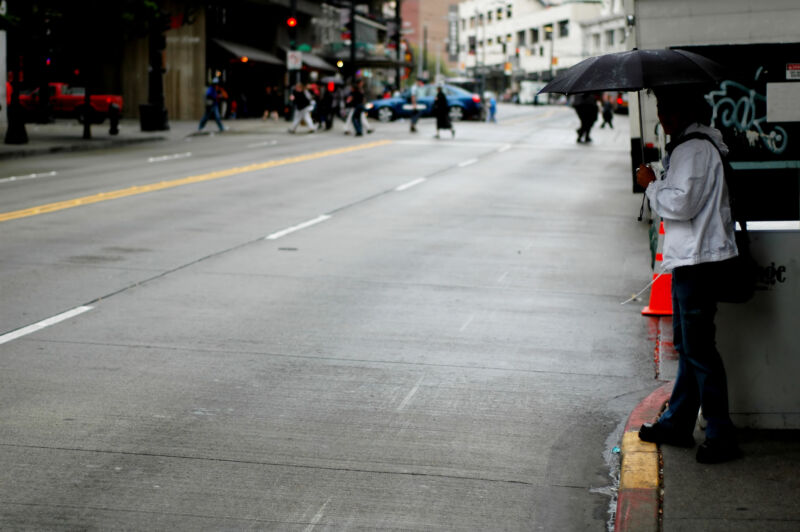
Getty Images
Although driving is a privilege, some Americans treat it more like a right. This entitlement leads them to get upset with policy proposals that try to increase road safety by prioritizing vulnerable road users over the wants of drivers. But a new study suggests that a common complaint—taking away lanes from cars makes emergency response times go up—about traffic calming isn’t actually true.
American roads aren’t particularly safe, and while much of the blame of late has been directed at ever-bigger trucks and SUVs, the problem is more complex than just big cars. Like the built environment, standard American road design, with a pair of lanes going in either direction, makes it very easy to drive much faster than the speed limit, which is often over 25 mph.
This is where road diets come in—they’re a relatively cheap and simple way to slow traffic and significantly cut the accident rate along a stretch of road. You take a four-lane (two-way road) and repaint it so there are now three lanes for cars: one in each direction, with a center lane in the middle for turning. The remaining space on either side becomes bike lanes (physically protected ones, please).
The study, conducted by a group of researchers at the University of Iowa led by Nicole Corcoran (now at Arizona State University) and published in Transportation Research Interdisciplinary Perspectives, sought to do a couple of things: First, survey emergency responders to find out how they feel about road diets, and secondly actually quantify the effect of road diets on EMS response time.
The emergency responders were all from Iowa, which was an early adopter of road diets, stretching back to 1996, and all had to have responded to emergencies both before and after the introduction of 4-to-3 road diets in a number of specific locations around the state. Just over half (52 percent) of the responders thought that their response times were the same both before and after the introduction of road diets, with a third saying times got slower and 16 percent saying they became faster.
What does the stopwatch say?
To quantify the actual effect of 4-to-3 road diets on emergency response times, the researchers looked at response times to certain emergency calls—”fires, overpressure ruptures, explosions, overheat-no fires, and rescue and EMS calls, as these incidents require a fast response where lights and sirens would be activated”—from three Cedar Rapids fire districts, each of which received a road diet during a six-year period between 2014 to 2020.
In total, they identified 1,202 emergency response trips that occurred before the road diets and 2,665 trips that occurred on roads that had been converted down to three lanes. And in doing so, they found that there was virtually no difference in emergency response travel time (in min/km) after a road conversion compared to before, both in total and when they looked at specific road diets.
Now, if there was just some way of getting car-brained politicians to read this study.
Transportation Research Interdisciplinary Perspectives, 2024. DOI: 10.1016/j.trip.2024.101158 (About DOIs).
